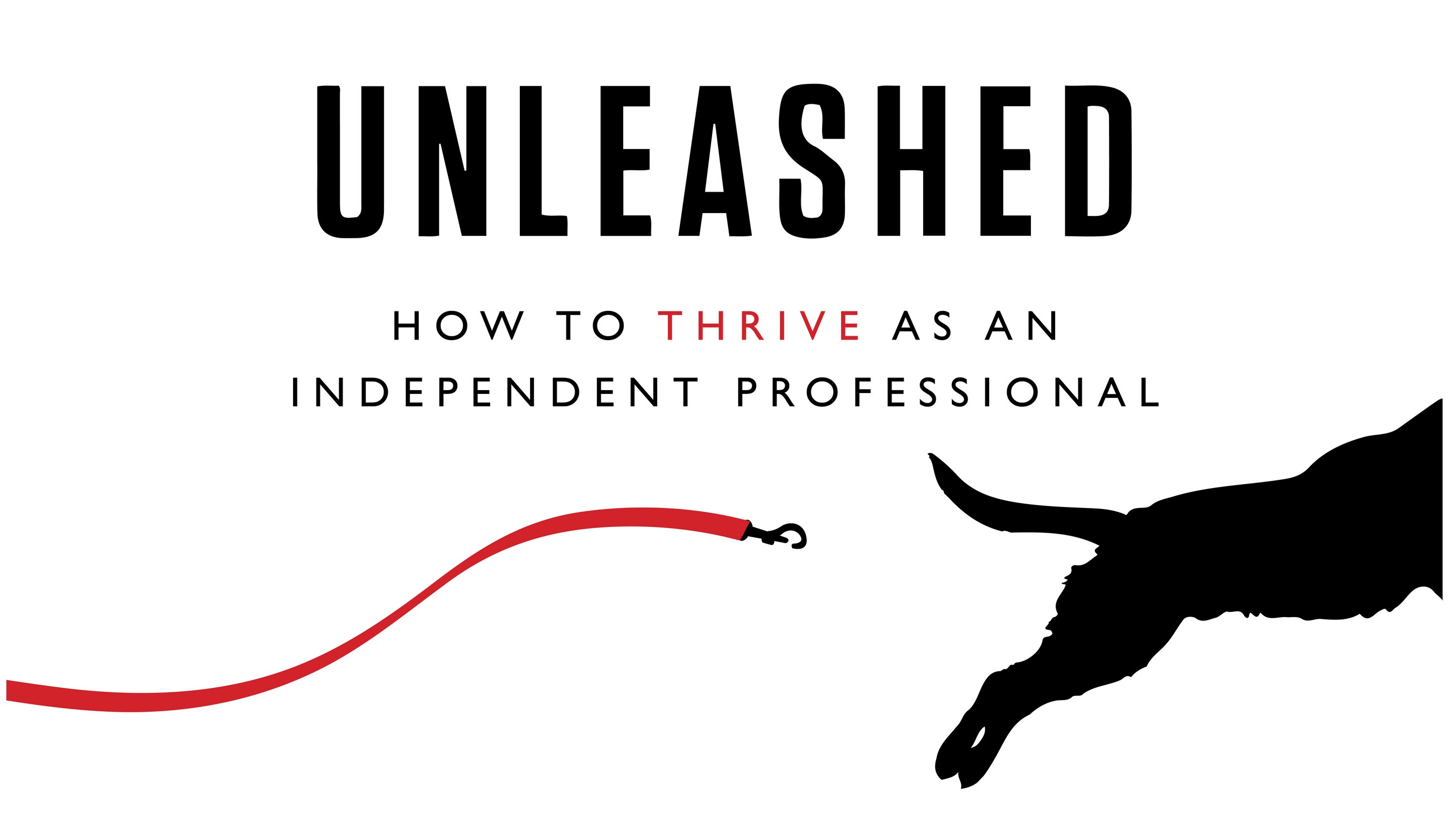Esther Kim is an independent consultant based in San Francisco who focuses on serving clients in the social sector, including non-profits, philanthropies, and social enterprises.
After getting her Masters degree in Environmental Engineering from MIT, Esther got her start in consulting at McKinsey, where she worked with energy, industrial, and nonprofit clients.
She then spent nine years at REDF, a venture philanthropy firm based in San Francisco. In 2014, Esther set up her own consulting practice focusing on the social sector.

Esther is a guest on Episode 24 of Unleashed-How to Thrive as an Independent Professional.
In our discussion we talk about the similiarities and differences between serving for-profit and non-for-profit clients.
We discuss what it takes to transition into the social sector, the difference in vocabulary from the for-profit sector, and how Esther tweaks frameworks such as the Business Model Canvas to apply them in her work. She also shares an inspiring story of a social enterprise Esther helped to establish- a staffing agency- that has helped hundreds of formerly homeless individuals find stable jobs.
You can find Esther online at www.estherkimconsulting.com

Will Bachman: Your practice focuses on serving clients in the social sector, including non-profits, philanthropies, and social enterprises. Can you give me an overview?
Esther Kim: From the outside, the type of consulting that I do really looks like what a lot of other independent consultants with a McKinsey background are doing ?. strategy, planning, a little bit into operations and performance management. The twist is that I primarily work with organizations that hope to have some kind of social impact with their work, whether that means helping children, or helping people get into jobs, or the environment. My clients span a broad range of social missions and a mix of non-profits of various sizes, and philanthropy, so funders of non-profits. I think I bring value to both sets of clients, as to non-profits I bring an understanding of how philanthropy works, and to philanthropy I bring some insight from working with organizations that are doing the work on the ground.
Have you found anything that particularly distinguishes working with non-profits and philanthropies from for-profit businesses?
One of the things I find most interesting is what they?re able to do with very limited resources, and the fact that they have often multiple stakeholders and goals. It?s not about making a profit and answering to shareholders. The goal is to help think through and plan and do something that is both core to and advancing their mission but also really tied into strategy. What works? What doesn?t? What has worked to date? It?s evidence based, like all of the things that are important for running a business, but applied to non-profits and philanthropy.
How do you identify the objective function you?re solving?
Each organization has its own goal around whatever they define their mission to be. As you can imagine, it?s complex. In trying to achieve social impact, there are many people and many different stakeholders who all have different vested interests. You?re get into politics. When I started doing this work I was just amazed at how much more complex it was than working with businesses, even large businesses.
Another thing that?s quite different is that for non-profits, the definition of customer is very different depending on what perspective you?re looking for. There are two types. There?s the end beneficiary of whatever service or social good is being provided and there are those who are paying for that good to be done, usually donors. Philanthropy foundations, individual donors, in many cases, the government. When the funder and their motivations and interests are not aligned with what the end beneficiary wants, needs, or is best fit for them, there can be all sorts of issues. The traditional notion of business planning, where you just focus on the customers? needs, is different.
When talking about funders, do they view success the way that investors do?
They come in with a very different mindset ? the charity mindset. It?s really interesting to see when people approach one setting with an investor mindset, and then in another setting it becomes a very emotional or personal connection. They?re connecting to what works for them on an emotional, personal level. There are many motivations for giving, but they often tend to be separate from the things that people look for when they?re investing.
What?s your guidance for those interested in transitioning from for-profit clients to the social or non-profit sector?
There are a lot of ways for people with business backgrounds to enter and work with the non-profit sector. One of the most common is some sort of volunteering. It could be as a board member, or as an advisor. I would recommend that first, before at all thinking about working with non-profits more professionally.
For folks that are looking to actually transition and either get a job or become consultants to non-profits, the best way I found is to stick with either your vertical or your function that you already know. The tools might be similar, just the purpose is different. If you have a particular issue area, that?s another way to get in. One thing I will say is the pay scale is different between sectors, and that can be a shock. If you?re working with a very small grassroots community-based non-profit without a lot of funding reserves, I would call it low-bono. It?s almost pro-bono.
Was there anything else that came as a surprise?
The non-profit world speaks a very different language. It operates differently. Even the way that they talk about leadership and business is completely alien and different in some ways. Language can really get in the way of bridging those two sectors. For instance, the word equity is a hugely loaded word in both sectors. For business people, what comes to mind is shares in a company, while for a non-profit person, particularly ones that are working in social justice or community development, the first thing that comes to mind is socioeconomic or racial equity. Another word is investing. When non-profits talk about investing, it usually means investing time or giving grants to help build a program.
Another thing is the need to approach it with a lot of humility. There is a lot of wisdom and understanding of what is happening on the ground, social issues that people have spent their entire lives trying to solve. No one?s come up with the answer, and people coming from the business sector often assume that the non-profit sector isn?t operating as efficiently as it should. That?s not the case.
You can bring a different perspective. You can bring different tools and frameworks. You can maybe bring money. But they?re not lower down or worse. They?re in fact very sophisticated and knowledgeable about what?s truly going on and the drivers of these issues.
What about social enterprises, the for-profit business that have a dual bottom line?
The thing that?s hard about social enterprise is that you do both at the same time. You often have to sacrifice one in order to achieve the other.
I?ll give you an example. One of the social enterprises I worked with provides housing and support services to formerly homeless individuals. They were interested in starting a social enterprise because they found that the next step beyond housing is income.
Working with folks who come in with those kinds of barriers to employment is a very different ballgame than employing people off the regular job market. I worked with them extensively to understand both the market needs and what kind of job skills would be the best fit. It had to be a reasonably good paying job with some career advancement opportunities, but also with some support.
We landed on a temp staffing agency for other affordable housing service providers. They have to have a certain set of skills to be a front desk clerk. The business provided temporary staffing services, and after 10 years it?s grown into a multi-million-dollar business employing hundreds of people a year. I?m so proud.
In the beginning it wasn?t profitable in the sense that it wasn?t covering 100 percent of its costs, but it shouldn?t have to. They?re employing people who were formerly homeless because of their social mission. Over time they managed to make it successful on the business side because they tapped into a customer need and delivered really good service. All the things that you want to do as a good business, you have to do those things too. This is not charity, this is business. But it?s also fulfilling a social mission.
How do you stay up to date on what?s going on in your sector?
I keep up with the Stanford Social Innovation Review. It?s like the Harvard Business Review but focused on all aspects of social innovation. Non-profits, philanthropy, etc. There are a number of blogs. Beth Cantor is a person who?s a real expert on non-profits and non-profit functions. One great thing about working with other non-profit independent consultants is they?re so collegial. There?s no sense of competition. We?re all in it together to help each other achieve a common good, which has been really fantastic.
Specific to social enterprise, I?m a member of the Social Enterprise Alliance. There?s Grant Makers For Effective Organizations, and increasingly more networks around non-profit consultants like the Alliance For Non-Profit Management and the National Network of Consultants To Grant Makers.
Do you have a dream project you?d like to work on?
One of the things I?ve fantasized about is on the environmental side and the international development side of things. My background is environmental engineering and renewable energy, so I?d love to get back into that.
Some people may know you ended up on a national TV commercial. How did that happen?
I got a notice about a customer market research firm that was looking for survey and focus group participants. I signed myself up, and one of the surveys that I got was about oral care. Two months later they needed four hours of my time. The next thing I knew, a black car showed up at my doorstep, whisked me off to a fancy house that had been transformed into a set with lights, and there was a little makeup trailer, and wardrobe. They later informed me that they chose my footage to turn into a national television commercial for a toothpaste brand used for sensitive teeth. It?s an example of how when you open yourself up to opportunities and see where life takes you, somehow you wind up with millions of people watching you talk about your sensitive teeth.
How can people find you best and reach out to you online?
My website is EstherKimConsulting, E-S-T-H-E-R-K-I-M consulting.com. My email address is [email protected]. I?m not that active on Twitter, but every so often I?ll tweet something. I?m @ekimconsulting.
?
On the website for Unleashed you can sign up for our weekly email. You?ll get the transcript of each episode and a link to listen, plus some bonus material exclusive to subscribers.


